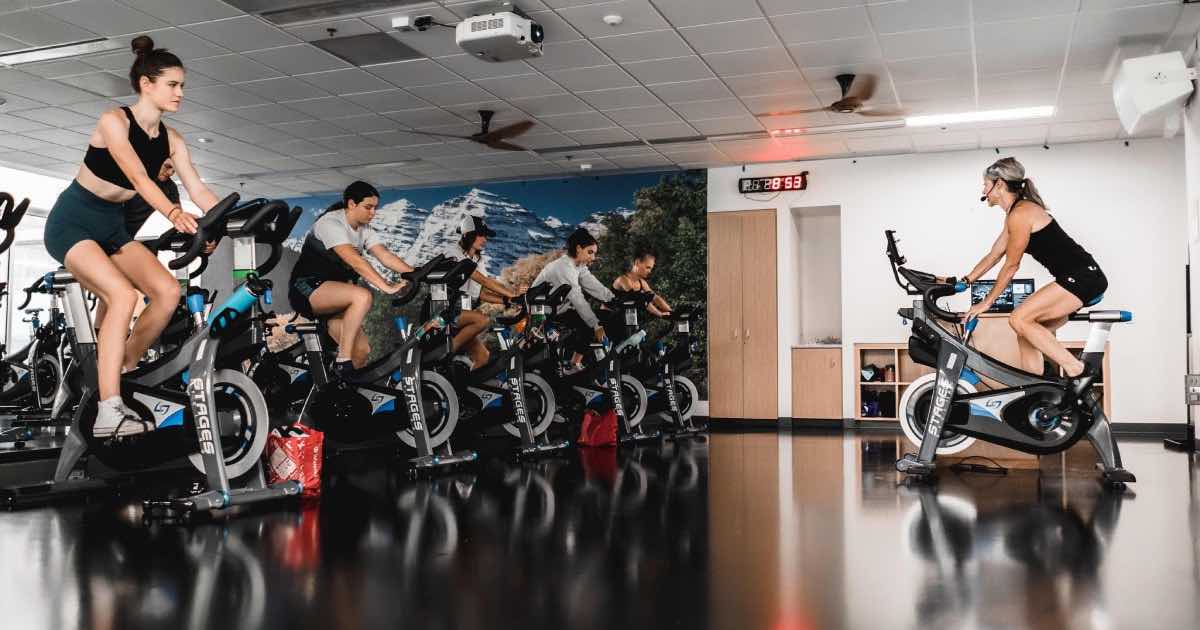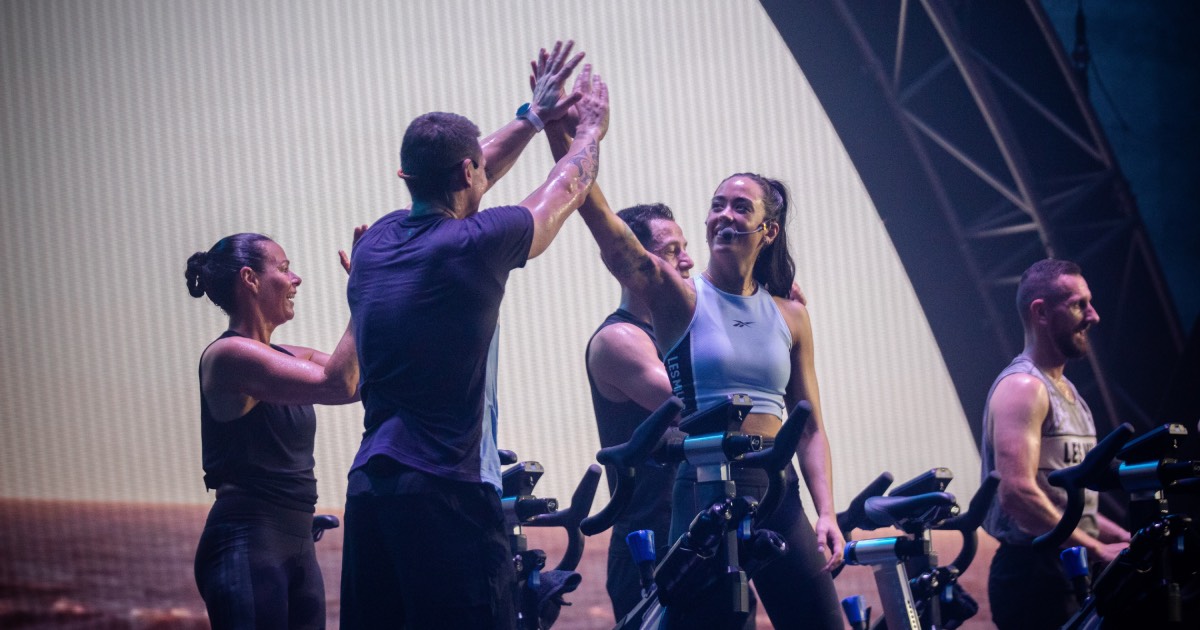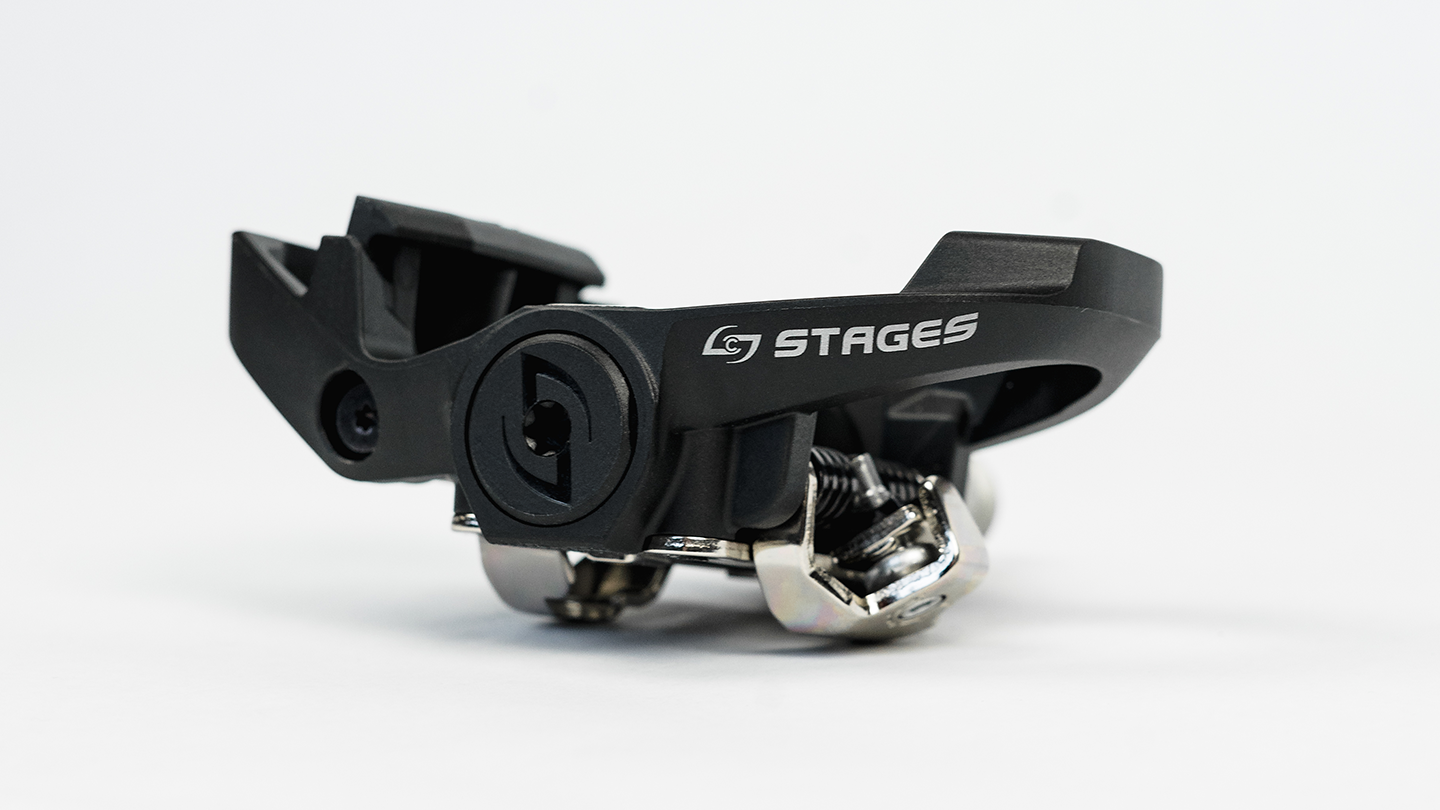How to Become an Indoor Cycling Instructor
- By Whitney Dawson
- Published: 2 mars 2022
- Last Updated: 3 mars 2022

With the rise of power meters being used indoors, our indoor cycling world seems to have become hyper-divided between power-purist studios and rhythm-based studios.
If you love cycling and find yourself putting together playlists for imaginary classes, then consider becoming a certified indoor cycling instructor. Whether you’re wanting to change careers or have a fun side hobby that makes you extra money, it’s worth it to invest in something that you love.
Here are some of the necessary qualifications for becoming an indoor cycling instructor.
1. You need to have a baseline level of endurance and comfort on an indoor bike. You’ll be leading by example in your classes, and so if you are still building your base fitness level and getting comfortable on an indoor bike, you might need to wait until you’ve accomplished that goal. While you won’t need to have as much resistance on your bike as your class, you need to be able to speak loudly, clearly, and confidently for the whole length of the class.
2. Next, there are certifications required for becoming a cycling instructor. This first one might surprise you. Cycling instructors need to be certified in CPR. This is a general requirement all gyms have for their instructors.
Some of the best and most versatile cycling instructor certifications are offered by Stages Cycling University (SCU). Created by and for indoor cycling instructors, Stages’ certifications cover a large range of topics designed to help new instructors learn the basics and current instructors level up their indoor cycling coaching skills. All SCU courses are accredited with ACE.
SCU’s beginner's course, Stages One, gives new instructors a solid foundation to start their career as cycling instructors. This course covers bike setup, safe riding techniques, and exercise physiology. Their music-focused course, Stages Beats, teaches the science of music and exercise, along with practical techniques for each class. The Stages Power course covers how to use a power meter and console, along with the overall science of riding with a power meter.
3. Get your indoor cycling instructor insurance. This will be a requirement before being hired.
While these aren’t requirements, here are a few more suggestions for those who want to become indoor cycling instructors.
1. Buy proper indoor cycling shoes. This sounds incredibly basic, but often beginners will become excited about cycling and want to start training, without having first purchased the right gear.
2. On that note, the second suggestion is to start cultivating a good wardrobe of workout clothes. Dress for the job you want, right? Find some that you’ll be comfortable and confident in while on stage, and won’t mind staying sweaty in after class is finished.
3. Incorporate other fitness activities into your workout routine, like weightlifting and other types of endurance exercises. Consider a yoga or Pilates practice to stay strong and balanced, and to prevent injury. Study other cycling teachers’ teaching styles. Do not copy them but use their example to find and cultivate your style of teaching. Try to identify what you like and do not like in others’ classes.
4. Other characteristics that studios often look for are friendly, cheerful personalities, a good sense of rhythm and timing, someone who is a people person, and the ability to take charge of a class.
What’s Included in Cycling Instructor Training?
In a basic instructor course, you’ll learn how to design a class, help students with their bikes, and how to give motivational cues. Additionally, training will likely include playlisting and vocal training. Vocal training will include practicing speaking with your diaphragm and using a microphone. More specialized training will cover music, beat matching, Functional Threshold Power, and more advanced coaching techniques.
For example, SCU’s Indoor cycling instructor course for beginners, Stages One, will cover these topics:
1. How to powerfully mix music, emotions, and communication to effectively motivate and coach your classes.
2. How to structure and cue your classes.
3. Monday Morning Ready tricks and tips.
4. How to design your classes.
Once you’ve mastered the basics, then it’s time for more training, like SCU’s Master Power Basics course, which covers:
1. The science behind riding with a power meter.
2. What is Functional Threshold Power.
3. Designing classes around power zones.
4. Goal-based class design.
5. How to pair metrics to music.
Tips for Nailing Your Audition
The beats per minute of a song gives instructors a good place to start their ride design. There are lots of apps that will tell you the beat of the music. You can open an app, tap your
Before a studio hires you, you will likely have to audition. Here are a few tips.
Choose music you love.
Be confident.
Be friendly.
Be authentic.
Show that you’re in control.
Often breaking into a career as an indoor cycling instructor will take time. You may have to start by teaching fewer classes than you’d like at less-than-optimal times. Also, take advantage of substitute teaching if you can accommodate last-minute class slots. Be patient and keep showing up as your best. As you prove yourself to the studio or studios, you’ll begin to build your loyal following of students and start landing the classes you want.

















